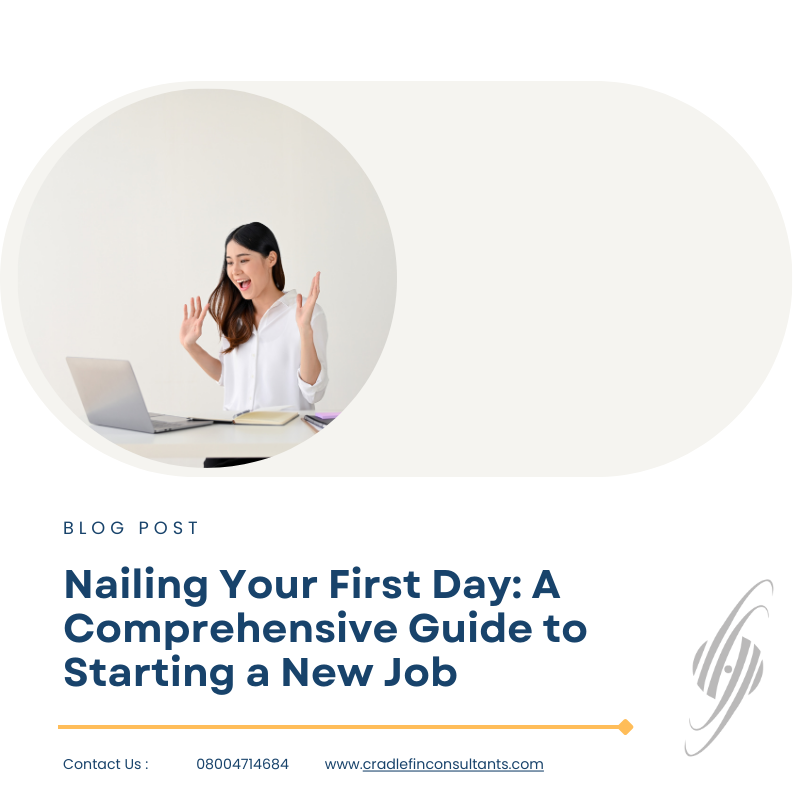Recruitment and talent acquisition are two essential components of building a successful workforce within organisations. While often used interchangeably, these processes have distinct objectives, goals, and methodologies. Understanding the differences between recruitment and talent acquisition is crucial for HR professionals and organisational leaders to effectively attract, hire, and retain top talent. In this article Cradlefin Consultants will explore the nuances of recruitment and talent acquisition, delve into their key objectives and strategies, and highlight the significance of implementing effective talent acquisition practises in modern organisations.
Overview of Recruitment and Talent Acquisition
Defining Recruitment: Recruitment is like speed dating for hiring – it’s all about finding the right match quickly. It focuses on filling immediate job openings with qualified candidates.
Defining Talent Acquisition: Talent acquisition, on the other hand, is more like a carefully orchestrated mating dance. It’s a strategic, long-term approach to identifying, attracting, and nurturing top talent to meet future organisational needs.
Key Objectives and Goals of Recruitment
Short-Term Hiring Needs: Recruitment is all about getting warm bodies in seats, pronto. Whether it’s replacing a sudden departure or expanding the team, the goal is to fill roles quickly and efficiently.
Volume Hiring: Recruitment excels in handling high volume hiring needs, like seasonal hiring surges or mass recruitment drives. It’s all about quantity over quality when the focus is on filling multiple positions at once.
Key Objectives and Goals of Talent Acquisition
Long-Term Talent Strategy: Talent acquisition takes the long view, focusing on developing a pipeline of top talent for future needs. It’s about forecasting skill gaps, nurturing relationships with potential hires, and building a sustainable workforce.
Building a High-Performing Workforce: Talent acquisition aims to create a dream team of high performers who align with the organisation’s values and goals. It’s not just about filling seats but about finding the right people who will drive the company forward.
Methods and Strategies in Recruitment
Job Postings and Job Boards: Recruitment relies heavily on job postings on platforms like LinkedIn, Indeed, and company career pages to attract candidates. It’s a numbers game – the more eyes on the job ad, the better the chances of finding the right fit.
Recruitment Agencies and Headhunting: For hard-to-fill roles or specialised positions, recruitment agencies and headhunters are like fairy godmothers waving their magic wands. They have the expertise and network to hunt down elusive talent and make the perfect match.
Methods and Strategies in Talent Acquisition: Employer Branding and Employee Value Proposition: In the world of talent acquisition, creating an enticing employer brand and a compelling employee value proposition are key. It’s like putting on your best outfit for a first date – you want to show off your best qualities and make potential candidates swoon. A strong employer brand helps attract top talent, while a solid employee value proposition keeps them interested and engaged.
Talent Pipelining and Succession Planning: Think of talent pipelining and succession planning as mapping out your career moves like a game of chess. Talent pipelining involves identifying and nurturing potential candidates for future roles, ensuring a smooth flow of talent within the organisation. Succession planning, on the other hand, is like having a backup plan for your backup plan – it’s all about preparing for future leadership needs and minimising disruptions.
Key Differences Between Recruitment and Talent Acquisition: Focus on Immediate Needs vs. Long-Term Planning: Recruitment is like speed dating – it’s all about finding a quick match to fill immediate job openings. On the other hand, talent acquisition is more like a slow burn romance – it focuses on long-term strategies to build a strong, sustainable workforce for the future.
Transactional vs. Relationship-Oriented Approach: Recruitment can sometimes feel like a one-night stand – it’s transactional, quick, and to the point. Talent acquisition, on the other hand, is all about building lasting relationships with candidates, nurturing talent pools, and fostering a sense of loyalty and commitment.
Importance of Effective Talent Acquisition in Modern Organisations: In today’s fast-paced and competitive business landscape, effective talent acquisition is like having a secret weapon in your arsenal. It’s not just about filling vacant roles – it’s about attracting the best talent, nurturing their growth, and ensuring a steady pipeline of skilled professionals to drive your organisation forward. After all, in a world where talent is king, mastering the art of talent acquisition can set you apart from the competition and pave the way for long-term success.
In conclusion, grasping the disparities between recruitment and talent acquisition is fundamental in maximising organisational success through strategic workforce planning. By leveraging the right methods and strategies tailored to each process, companies can enhance their ability to attract, engage, and retain top talent in a competitive market. Embracing the importance of effective talent acquisition practises is not only a key differentiator for businesses but also a critical enabler of long-term growth and success.
Frequently Asked Questions (FAQ)
1. What is the main difference between recruitment and talent acquisition?
The main difference between recruitment and talent acquisition lies in their scopes and objectives. Recruitment is a tactical process focused on filling specific job vacancies with qualified candidates in a timely manner. It is typically a reactive approach aimed at addressing immediate hiring needs. On the other hand, talent acquisition is a strategic and long-term initiative that aims to build a pipeline of top talent to meet both current and future organisational needs. Talent acquisition focuses on attracting, engaging, and nurturing candidates who align with the organisation’s values, culture, and long-term goals. In essence, recruitment is transactional, while talent acquisition is more relationship-oriented and holistic in nature.
2. How can organisations benefit from a strategic talent acquisition approach?
Organisations can benefit greatly from adopting a strategic talent acquisition approach in several ways. Firstly, by proactively identifying and cultivating a pool of high-potential candidates, organisations ensure a consistent talent pipeline, reducing time-to-fill and hiring costs. Secondly, a strategic talent acquisition approach enables organisations to align their recruitment efforts with their long-term business objectives, ensuring that they have the right talent in place to drive growth and innovation. Additionally, by focusing on the overall candidate experience and employer branding, organisations can attract top talent and enhance their reputation as an employer of choice. Finally, strategic talent acquisition fosters a culture of continuous improvement and talent development, leading to higher employee engagement, retention, and ultimately, business success.
3. Are recruitment and talent acquisition processes equally important for all types of businesses?
While both recruitment and talent acquisition processes are essential for all types of businesses, the level of emphasis and resources allocated to each may vary based on the organisation’s size, industry, and strategic priorities. Small businesses may prioritise recruitment to quickly fill immediate job openings, whereas larger enterprises with more complex talent needs often benefit significantly from a strategic talent acquisition approach. Industries with high turnover rates or specialised skill requirements may place greater importance on talent acquisition to ensure a steady supply of qualified candidates. Ultimately, the key is to strike a balance between recruitment and talent acquisition efforts that align with the organisation’s unique needs and long-term goals, regardless of its size or industry. By combining both processes effectively, businesses can build a strong, sustainable workforce that drives success and growth.






